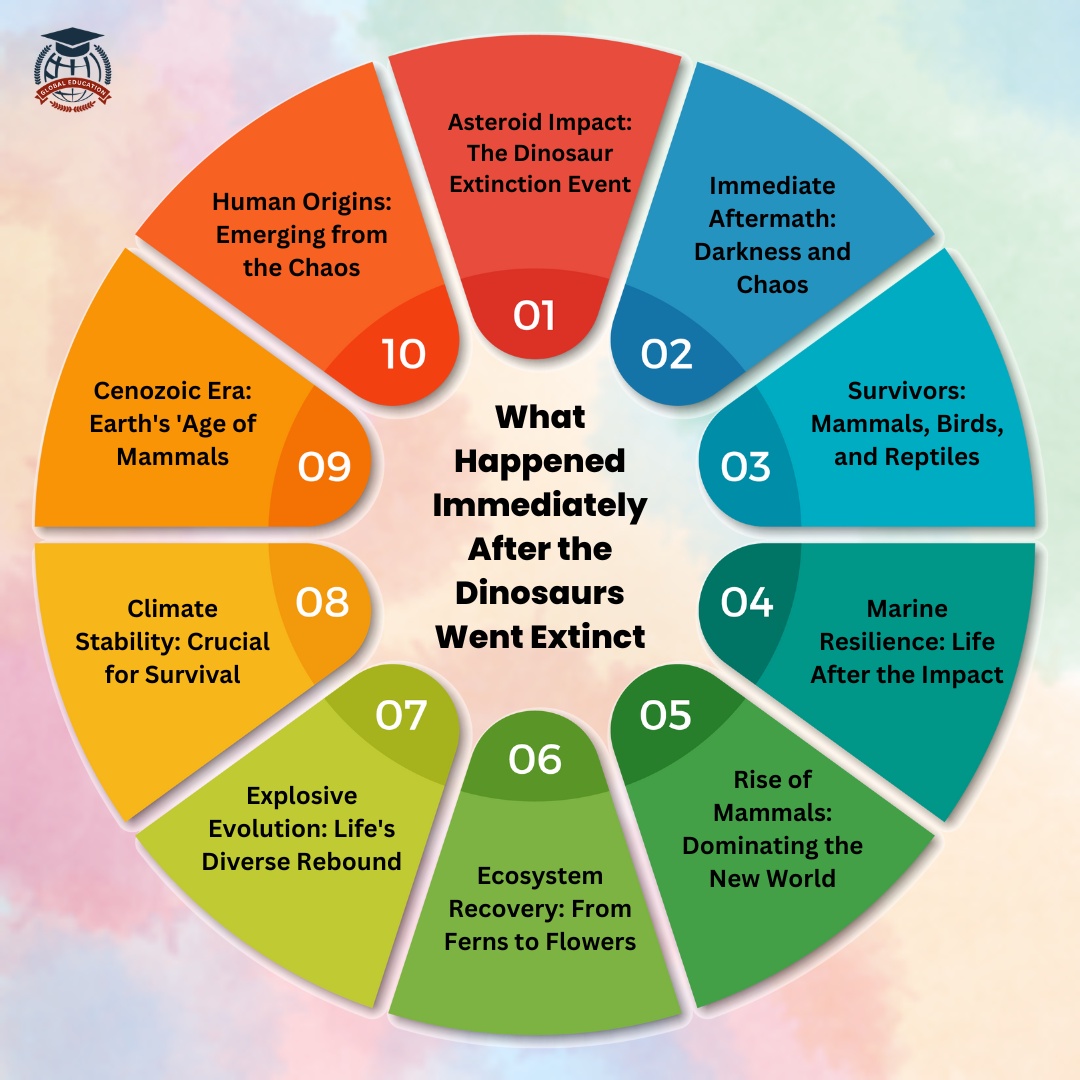The extinction of dinosaurs, which occurred approximately 66 million years ago, marked a pivotal moment in Earth's history. While many are familiar with the asteroid impact hypothesis as a cause, what happened immediately after the dinosaurs went extinct is a fascinating story of resilience, adaptation, and the rise of new life forms. In this exploration, we delve into the post-dinosaur era and the profound changes that shaped the planet's ecosystems.
The Immediate Aftermath: Following the catastrophic event that wiped out the dinosaurs, a curtain of darkness descended upon Earth. The impact caused widespread fires, tsunamis, and a "nuclear winter" effect as dust and debris blocked out sunlight for months. This event devastated the existing ecosystems and left a grim aftermath.
Survival of the Fittest: Despite the chaos, some species managed to endure. Small mammals, previously overshadowed by the dinosaurs, seized the opportunity to adapt and thrive. Their size and adaptability allowed them to find shelter and sustenance even in the harsh conditions.
Rise of the Mammals: In the wake of the dinosaurs' extinction, mammals diversified rapidly. They evolved into various niches, from burrowing creatures to tree-dwellers. Some grew to impressive sizes, like the giant ground sloths and saber-toothed cats, as they filled the ecological void left by the dinosaurs.
Avian Evolution: While most dinosaurs perished, some feathered dinosaurs survived and evolved into birds. These avian survivors developed unique adaptations, such as hollow bones for flight, and diversified into numerous species that would dominate the skies.
Recovery of Plant Life: The aftermath of the asteroid impact favored plant life. With less competition from large herbivores, plant species thrived. Forests began to regrow, and new plant forms emerged, creating the foundation for future terrestrial ecosystems.
Marine Resilience: Marine life, too, faced challenges. The oceans experienced mass extinctions, but marine organisms proved resilient. Some fish species diversified, and ancient relatives of today's whales and dolphins began to emerge.
Impact on Invertebrates: In the seas and on land, invertebrates like insects and mollusks faced significant evolutionary changes. Their adaptations and diversification contributed to the reshaping of ecosystems worldwide.
The Rise of Reptiles: Although the dinosaurs were gone, some reptile groups persisted. Crocodiles and turtles, for instance, survived the mass extinction event. They continued to evolve and adapt, maintaining a presence in Earth's ecosystems.
Paleocene-Eocene Thermal Maximum: Around 55 million years ago, Earth experienced another major climate event known as the Paleocene-Eocene Thermal Maximum (PETM). During this period, the planet witnessed a rapid and extreme warming, causing significant changes in ecosystems and species distributions.
Mammalian Radiation: The PETM played a crucial role in the further evolution of mammals. It triggered a rapid diversification of mammalian species, with the emergence of primitive primates, which would later evolve into humans and other primates.
Emergence of Modern Ecosystems: Over millions of years, ecosystems gradually stabilized and diversified, resulting in the formation of modern habitats and species as we know them today.
Ice Ages and Megafauna: During the Quaternary Period, Earth experienced a series of ice ages. This climatic fluctuation had a profound impact on the evolution of large mammals, including the iconic woolly mammoths and saber-toothed cats.
Human Evolution: As time progressed, the lineage leading to modern humans emerged. Our species, Homo sapiens, evolved in Africa and eventually spread across the globe, shaping ecosystems and contributing to the ongoing story of life on Earth.
The immediate aftermath of the dinosaur extinction event was a tumultuous period in Earth's history. It witnessed the rise of mammals, the evolution of birds, and the resilience of various life forms. Over millions of years, these changes paved the way for the formation of the diverse ecosystems we see today. The story of life on Earth is a testament to the adaptability and resilience of organisms in the face of cataclysmic events.
YouTube Link: https://youtu.be/CITjDUOb4Hg


No comments yet